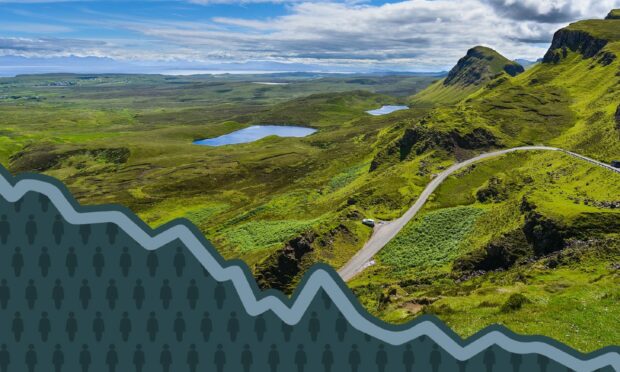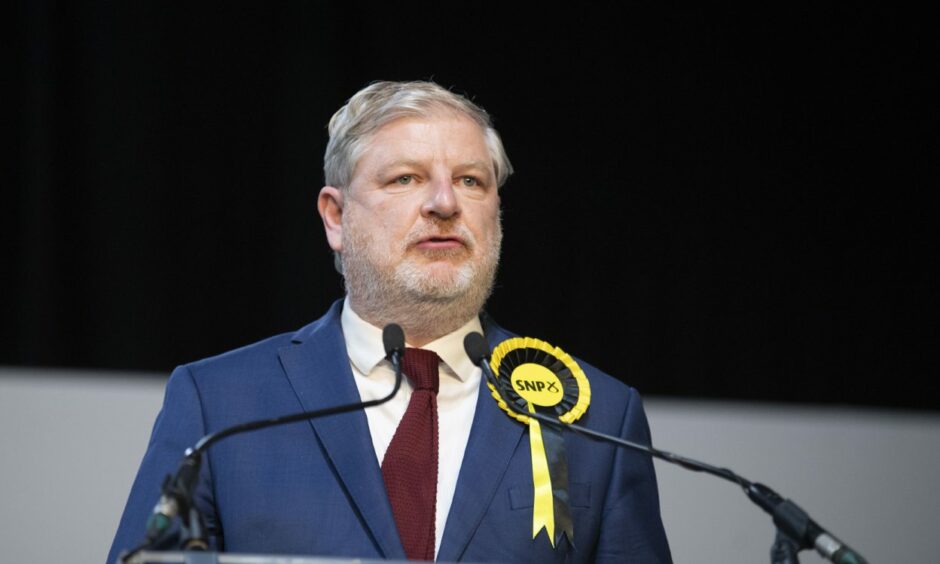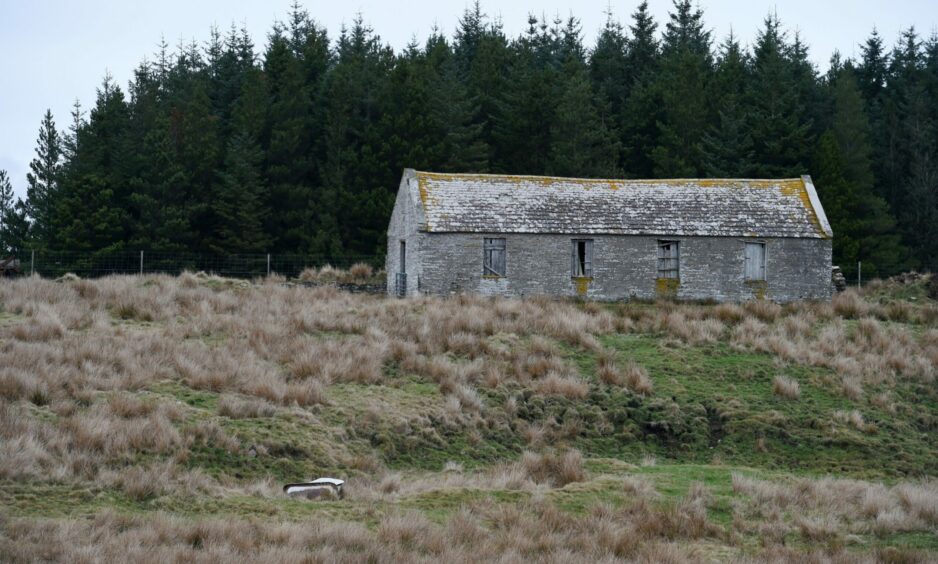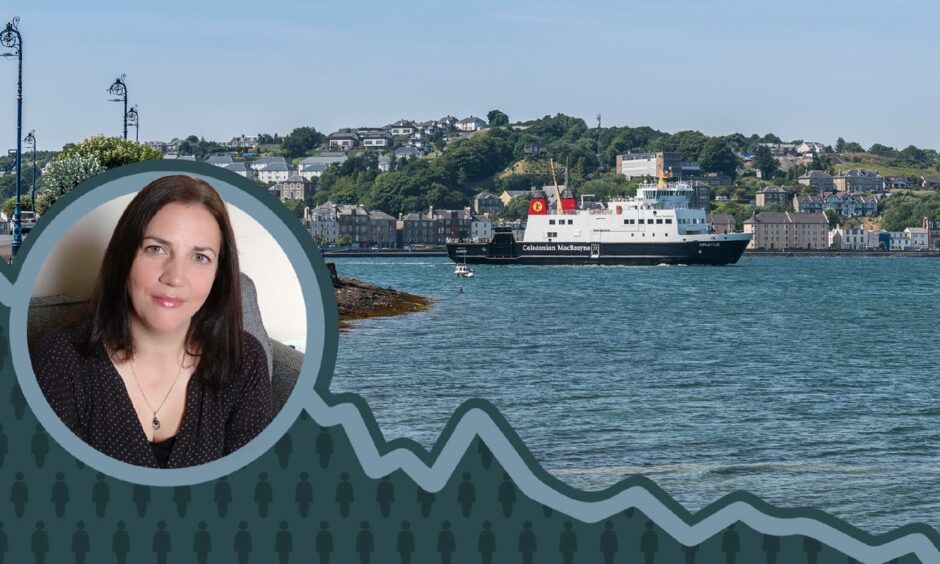Rural and island communities are being encouraged to sell themselves more to help tackle depopulation.
Brand Scotland is expected to update campaigns this year to attract more people to the country.
The Scottish Government believes there is an opportunity for areas suffering depopulation to localise the marketing strategies.
Brand Scotland brings together communications efforts of the Scottish Government and partners covering tourism, business, education and food and drink.
It promotes the country as a desirable place to live, work, study, visit, trade and invest.
An opportunity to localise Scottish campaign
Angus Robertson is the cabinet secretary for the constitution, external affairs and culture. He believes local campaigns could help with population loss.
“In places that are challenged by depopulation, and that’s now approaching half our local authorities in Scotland, people are going to have to be more forward-leaning about ‘here’s who we are and here’s where we are’.
“We need to make the most of communicating to people who might move, or are prepared to move, domestically or internationally, so they have a better understanding about parts of the country that are keen to see their population grow.
“A lot of work goes into promoting Scotland as a great place to live, work, study and invest in.
“I think there is an opportunity to localise that offering and incorporate into national messaging local content to make it easy for people to understand why different parts of the country have huge attractions.”
He says this should happen while local and national governments addressing deep-seated challenges. These include housing, transport and health.
“It’s going to be by understanding the needs, interests, concerns and expectations of communities that are suffering depopulation that we can deliver the right public policy outcomes to help people stay where they are from and encourage people to move there as well.
“It means government and agencies working better together to find tailored solutions to challenges while, at the same time, communicating effectively so that people not from these parts of the country realise there are opportunities to live in some of the most beautiful parts of Scotland.”
Repopulation zones mooted
Mr Robertson chairs the government’s population taskforce. It is looking at ways to address depopulation.
A recent paper said there is merit in developing ‘repopulation zones’ in hard-hit areas.
The potential zones include Caithness and Sutherland, the Outer Hebrides and Argyll and the islands.
A subsequent report from the independent Expert Advisory Group on Migration and Population did not recommend specific policies or potential zones.
It said: repopulation zones, or other kinds of place-based policymaking, “may support innovative interventions”.
But, it said, the implications, and potential for unintended repercussions, need to be carefully thought through.
The advisory group’s findings will help inform the Scottish Government’s Addressing Depopulation Action Plan in the autumn.
In the meantime, the government says it supports locally-led repopulation initiatives in Argyll and Bute, Western Isles and Highland.
Mr Robertson said he is open-minded about ways to tackle the issue.
“Specific policy proposals, such as zoning issues, are ones that will be subject to consideration now that we have the report (from the advisory group).
“There isn’t a single solution that’s going to deal with all of the challenges of population decline. But there are a wide range of initiative that may contribute towards it.”
He warned of “unintentional consequences”.
“One of the aspects of zonal proposals is whether that doesn’t just displace some of the same population challenges to areas close by but outside the particular zones.
“I’m extremely keen that the ministerial population taskforce looks at all potential suggestions and discusses them with local partners.
“We need to be careful to hear from local communities and their priorities about what they think is going to make a difference and if it’s possible to trial initiatives in particular areas that’s certainly something that can be looked at.”
Rural visa pilot
He said the government will learn from elsewhere to deliver “measurable, sustainable solutions” for communities.
“Inevitably that will lead to different focus in different parts of country.”
The government’s idea for an Islands Bond scheme was dropped. It would have offered up to £50,000 to island residents to stay or to new people to move in.
But it is still looking at plans for a rural visa pilot scheme for Scotland, developed with councils and employers.
The proposal, which requires to be implemented by the UK Government, is based on the Canadian Atlantic Immigration Program.
Mr Robertson said: “I really hope the UK Government considers this modest pilot proposal and agrees that it is worthwhile pursuing.
“We have very different population, migration and immigration realities in different parts of the UK. Scotland is the only part of the UK that has a projected population decline. Parts of Scotland, as we know, has suffer disproportionately from depopulation.
“So whether it’s doing a pilot on a rural visa scheme, or consideration being given to other pilot possibilities, I’m open-minded about trialling policy proposals to see whether they deliver the success that we hope they might and whether they can be rolled out more generally.”
Are you interested in more exclusive and breaking Highland and Islands news from the P&J? If so, why not join our dedicated Facebook page HERE














Conversation